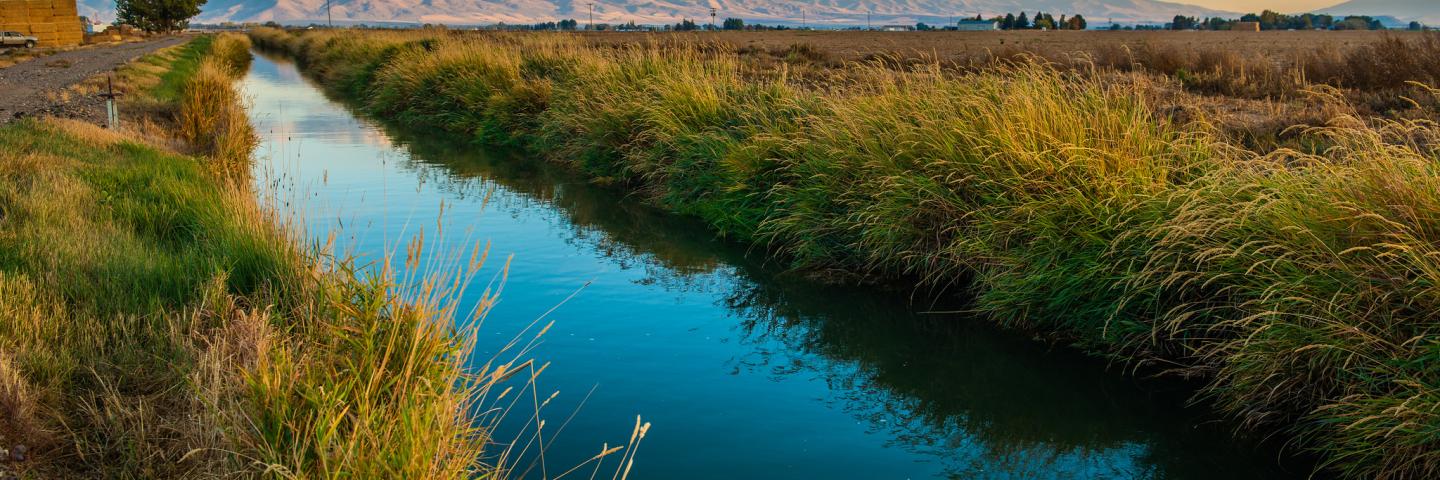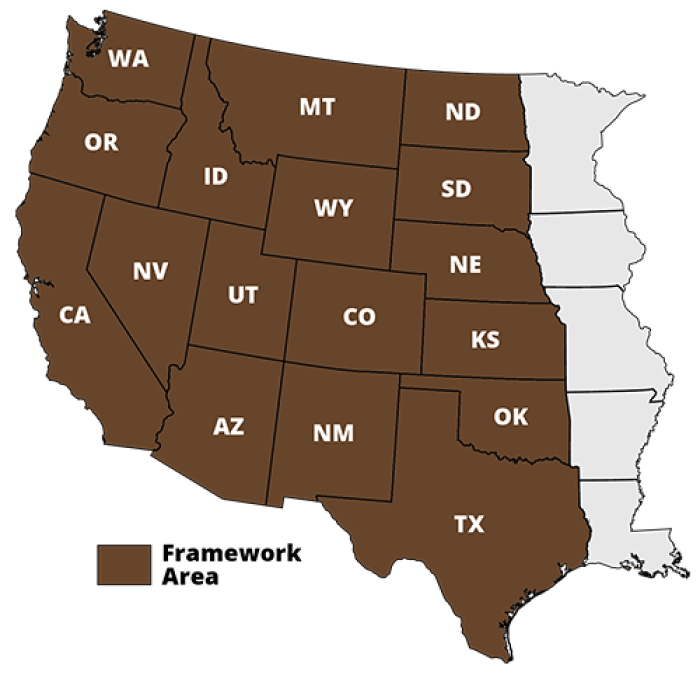
There is an increasing demand for water in the West, but available water is in fast decline. Drought frequency, intensity, and duration is increasing in the West and impacts are getting worse.
There is an increasing demand for water in the West, but available water is in fast decline. Drought frequency, intensity, and duration is increasing in the West and impacts are getting worse.
The Natural Resources Conservation Service (NRCS) and conservation partners worked with water and other natural resource stakeholders to develop a new framework, the Western Water and Working Lands Framework for Conservation Action, for collaboration and investments that help producers and communities conserve water and build drought resilience.
In this framework, six conservation challenges on vulnerable agricultural landscapes, and 13 strategies are identified to help NRCS state leaders, water resource managers, and producers respond to these growing threats. NRCS uses this framework to track investments and show how they are accelerating the benefits of voluntary conservation across the West.

Conservation Challenges
- Forecasting water supply
- Sustaining agricultural productivity
- Protecting groundwater availability
- Protecting surface water availability
- Managing and restoring rangelands and forestlands
- Responding to disruptions from catastrophic events
Response Strategies
- Improve reliability of water supply forecasts
- Improve soil moisture and irrigation water management
- Improve water and nutrient management in crop fields and pastures
- Modernize water infrastructure
- Improve community water supply by completing watershed projects
- Increase reuse of wastewater for agriculture and conservation
- Prolong aquifer life
- Complete managed aquifer recharge projects
- Reduce surface water withdrawals
- Install conservation systems that protect water quality
- Restore and protect streams and wetlands
- Manage and restore rangelands and forestlands
- Increase resilience during disaster recovery
Investments Aligning with the
Western Water Framework
Investments1 Aligned Directly with Framework
2023 - $2.3B | 2024 - $2.3B
Regional Conservation Partnership Program and Partner Contribution Investments2 for New Projects Aligning with the Overall Framework
2023 - $805M | 2024 - $441M
Challenges
1.0 Forecasting Water Supply in Areas Depending on Snowmelt
2023 - $9.3M | 2024 - $16.8M
2.0 Sustaining Agricultural Productivity
2023 - $896.3M | 2024 - $1.26B
3.0 Protecting Groundwater Availability
2023 - $350.2M | 2024 - $512.5M
4.0 Protecting Surface Water Availability
2023 - $521M | 2024 - $789.4M
5.0 Managing and Restoring Rangelands and Forestlands
2023 - $479.1M | 2024 - $658.8M
6.0 Responding to Disruptions from Catastrophic Events
2023 - $239.1M | 2024 - $163M
The conservation issues related to each challenge are described in the adjacent column.
Notes:
1. Investments may benefit more than one challenge at the same time and are counted each time a benefit is provided. Due to overlapping benefits, the total investments aligned with specific challenges result in an amount greater than which directly aligns with the overall framework.
2. RCPP investments announced for new projects align directly with the overall framework but not specific challenges.
Conservation Issues Related to Each Challenge:
1.0 Forecasting water supply in areas dependent on snowmelt: reliable data about precipitation, snowpack, evapotranspiration rates, and other elements of the water cycle needed for accurate water supply forecasting.
2.0 Sustaining agricultural productivity: amounts of snow drift and naturally available soil moisture, agricultural drought, inadequate water storage and supply, inefficient irrigation water delivery and use, opportunities for water and wastewater reuse, excess water, threat of conversion of crop fields and pastures to non-agricultural lands with lower hydrologic value and function, poor soil health, soil loss due to erosion, sediment and nutrient transport leading to poor plant productivity and poor water quality.
3.0 Protecting groundwater availability: groundwater depletion and related limitations to land and resource use are issues related to prolonging aquifer life in areas with limited precipitation and natural recharge capacity; opportunities to manage aquifer recharge are encouraged where feasible.
4.0 Protecting surface water availability: excess withdrawals leading to depletion; ponding and flooding issues or inadequate water control and pollution trapping practices at the edges of crop fields and pastures or other lands suitable to protect water quality; opportunities to restore streams and wetlands with degraded aquatic habitat or use in-stream practices to address threats like hydrologic drought, high water temperature, or excessive bank erosion.
5.0 Managing and restoring rangelands and forestlands: opportunities to manage the storage, timing, distribution, circulation, and quality of water in watersheds predominantly made up of rangelands and forestlands.
6.0 Disruptions from catastrophic events: communities have limited resources to cope with and respond to excessive impacts from large natural disasters like megadroughts, devastating wildfires, extreme weather, epic floods, massive landslides which then lead to successive impacts like major shifts in vegetation, land use changes, declining water supplies, and degraded water quality.
More information on conservation issues that may impact agricultural productivity or natural resources on farms, ranches, or forests and connected areas can be found at Farmers.gov.

